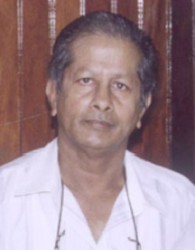With recent revelations that the Skeldon sugar factory is costing an additional US$30 million for rehabilitation works, the union GAWU is demanding full disclosure of any and all budgetary support that the EU provided for the industry.
Since the implementation of the Guyana National Action Plan in 2006, the European Union (EU) has provided over €114 million ($31.1b) inclusive of the 2012 provision of €23.35 million which will be distributed this year. The funding was a result of the accompanying measures agreed by the European Parliament to ease the pain of EU sugar regime reforms on countries like Guyana.

Questions have been raised as to how much of that money went directly to reforming the troubled sugar industry here. The government here has not provided a breakdown of how the amounts were spent.
President of the Guyana Agricultural and General Workers Union, Komal Chand told Stabroek News last week “I would like to see that every cent that comes from the EU as budgetary support to the government of Guyana” intended for the sugar industry “… that this money should go to assist the sugar industry to make it competitive.”
When Stabroek News asked Chand to clarify his position on his expectations, this newspaper was told that GAWU would like to understand how much the EU has actually provided over the years because he noted that money was handed down as a result of the meeting of various indicators. Chand said that “all the money that comes for sugar must go to sugar.
I can only make a statement like that. I don’t have the details to say how much has come, how much ought to come, how much they didn’t get because there were failures in the indicators and how much was transmitted to the industry, I can’t say.”
The head of GAWU noted that the industry needed to be privy to the financial situation and that meant that the amount the EU has given needed to be documented versus the amount promised. Then, he said, the government had the responsibility to say just how much was received and how much was given directly to GuySuCo. Chand continued that it was then GuySuCo’s responsibility to properly outline where the money that percolated down went and to which projects or developmental areas. He noted that all parties involved had shared responsibility.
Stabroek News asked Chand if GAWU would like to see a return to project-based funding from the EU as opposed to budgetary support to which he replied “I would like to see all of that [money] go to the sugar industry” and that he was not sure if that had been the case. “I am not aware of the sum of money that came as budgetary support that could’ve gone to the sugar industry…it has never been made public as far as I am aware by any of the parties, that is, the government or the EU”, Chand stated.
He said “first of all we need a clear statement from the EU what was provided over the years”, noting that the indicators had to also be outlined and how well the industry lived up to those indicators.
Chand did say that this was not an attack on any of the parties, but that if the sugar industry was to move ahead and prosper, new ways of doing old business had to be addressed.
He said the sector problems did not happen overnight and that it would take a few years to fully resolve issues with cooperation at all ends.
He brought up the current weather and the challenges that the rains have posed including delaying the second crop harvesting from commencing at the Skeldon factory.
This has occurred because of Skeldon’s greater dependence now on mechanized harvesting. Chand noted that mechanization was not a new idea and that in the 1970’s and the 1980’s when it was first introduced it did not flourish because the mac-hines and the soil were not compatible. Chand said the “late 70’s early 80’s I think they had a machine or two and they didn’t manage to do much with those machines because they were much heavier.
Over the years the technology has enabled them to now have lighter machines and maybe they have to look in that direction whether lighter and smaller but maybe more.”
He noted that Guyana was below sea level which meant that drainage of the fields had to be taken into consideration and the soil was very soft when wet. Chand said “GuySuCo doesn’t even have the wherewithal because there is a lot of money required to buy a large fleet of bell loaders and large fleet of cane harvesters and bearing in mind your weather situation”.
He reiterated that “we would like to see every cent that came as budgetary support intended for the sugar industry go to the sugar industry” because GuySuCo could potentially sort out the procurement of better equipment.
In June at the signing of the 2012 Financing Agreement for the Guyana Annual Action Programme on Accompanying Measures for Sugar Protocol Countries, EU Ambassador Robert Kopecky stated that the money has been spent on education and social cohesion and that moving forward “we have been consulting each other and saying this is probably not the way to continue for guaranteeing the sustainability of the industry in the future; we must be more targeted to the industry itself; to the sugar, conversion of lands, mechanizations, support to private farmers….”





